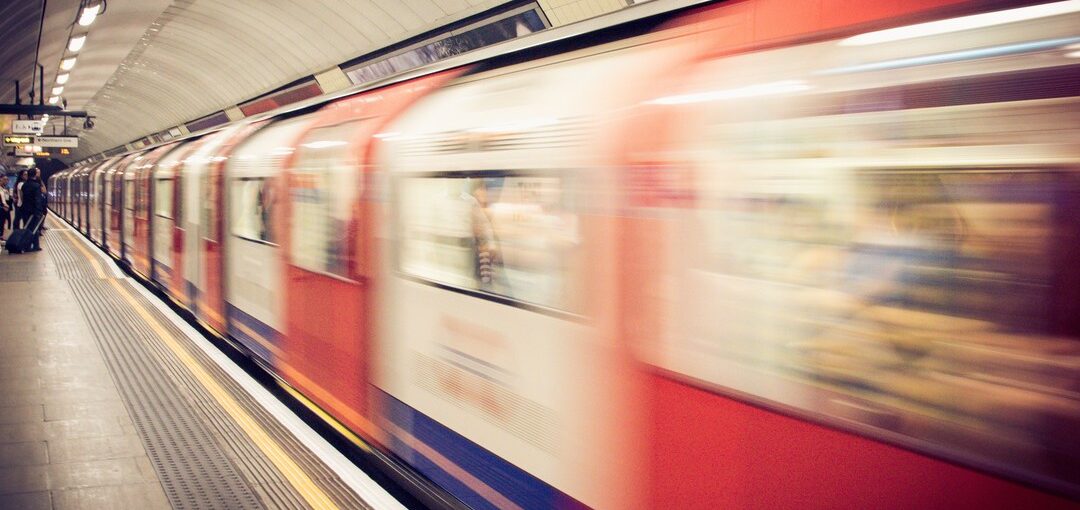From Lagger to Leader: How Tech Is Transforming Rail
May 16, 2018

There is no question that efficiency is not optional for rail companies, but if you want to compete and win in the long game, the age of the cut-centric CEO is over. Investing in technology that continues to innovate your company and the industry is critical to leading the charge into the future with safe, reliable and sustainable rail operations. If you want to lead, you have to leverage new technology, use real-time data, increase visibility, and connect data by turning it into actionable information.
One geography leading the way is LA County, particularly LA Metrolink. Through the Office of Extraordinary Innovation, they’re testing leading-edge technology that is designed to move people and freight faster, better, cheaper and smarter. Projects such as Mobility on Demand (MOD), public-private partnerships (P3s), modern communications technologies, and connectivity and the Internet of Things (IoT) for buses, trains and stations are just a few examples of their forward-thinking initiatives.
Another company that is fully embracing technology and seeing increased safety and dividends as a result is BNSF. Earlier this year, it announced its 2018 capital investment plan of $3.3 billion, which will maintain its network and explore expansion projects to meet customer needs. BNSF’s continued commitment to safety, efficiency, and customer experience can be seen in its ability to use predictive analytics to replace assets before failure as well as its dedication to growth areas like connecting Southern California to Chicago and the Upper Midwest region. It’s also the only Class I freight railroad that has completed the mandated PTC installation well ahead of schedule.
Companies that consistently focus on cutting-costs instead of embracing technology and innovation will remain laggers in the industry. Other rail companies that want to move into leader positions can follow LA Metrolink and BNSF’s strategies by implementing technology such as:
Big Data and Analytics
The ability to see and understand complex data sets, is critical to monitoring the health, behavior and lifespan of rail assets. At Wi-Tronix, we’ve been leveraging big data for more than 13 years. Using Locomotive Data Acquisition Systems (LDARS), we monitor data from audio, video, event recorder, mobile devices, remote transmission, or third party subsystems on over 12,000 assets. We’re the industry leader in connecting railways with the ability to collect longer data sets and universalize that data to drive outcome.
We help our customers connect to and understand complex and disparate data sets through integration by asset, train, relationships, configuration, GIS, visualization providing for system wide performance monitoring. This comprehensive view of rail data allows our customers to act in real-time as well as strategize for long-term business management. In short, it gives them the information they need to remain agile and lead the industry safely and efficiently delivering to its shareholders.
Internet of Things (IoT)
The next step in using data as effectively as possible is connecting it to other devices, systems and services, or as many refer to this, the Internet of Things (IoT). IoT is the technology that provides rail executives the opportunity to make sound decisions and validate those decisions nearly in real-time. They’re able to look at trends in hours/days instead of weeks or even months enabling faster, more accurate operation precision. Measuring your decision now is, or will be, required by the market and customers in order to see the impact of those changes.
This has been at the core of Wi-Tronix technology since the beginning. We leverage IoT by connecting systems, creating greater safety and security and uncovering new opportunities. Some of those may be used for asset monitoring on and off the track, predictive diagnostics, advanced analytic automation, visual intelligence and virtual reality cameras (VR). Taking into account simplifying the the end user experience by drawing a straight line from A to B concepts.
Visibility
The last piece in IoT, visibility, is critical to operations. Whether for locomotive cab safety issues or remote asset monitoring that could prevent locomotive on line failure, visibility technology is critical to safety, reliability and efficiency. Rail companies that don’t have visibility of their locomotive or train location in feet – not miles – increase risk and lack transparency.
Our Violet software is an example of best-in-class visibility. It:
- Fuses onboard data without files, downloads or web-based viewer software
- Uses real-time streaming data devilry for up-to-the-second connectivity to your asset
- Provides VR 360-degree views that can place you in the cab or on the wayside from anywhere
- Offers sophisticated video analytics to transform data into actionable information
- Common user interface no matter the locomotive OEM
All of this aids in security and safety of passengers and provides new looks into behaviors occurring onboard and around the locomotive. Rail companies that fail to incorporate visibility technology into their business strategy will lag behind the industry and, perhaps even face a cold market and weak shareholder value. As Walmart discovered from Amazon’s rise to retail power, rail incumbents can’t overlook new innovation and remain the leaders.
These key technology elements – big data, IoT, and visibility – are the baseline for future-proofing your success. Using them, the rail industry will flush out the laggers, leaders and innovators. I leave you with one simple question: If your service requirements are meeting customer needs, why are there so many STB requests on service issues?
Originally published on LinkedIn
